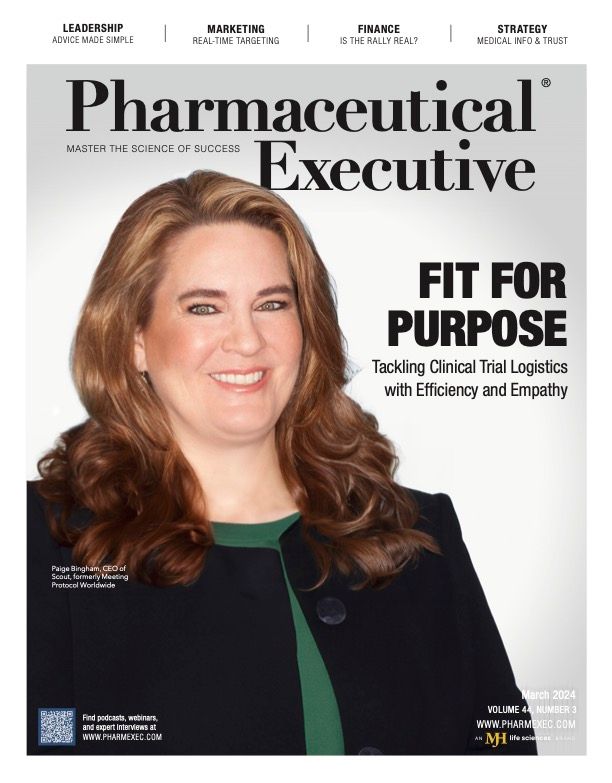- Sustainability
- DE&I
- Pandemic
- Finance
- Legal
- Technology
- Regulatory
- Global
- Pricing
- Strategy
- R&D/Clinical Trials
- Opinion
- Executive Roundtable
- Sales & Marketing
- Executive Profiles
- Leadership
- Market Access
- Patient Engagement
- Supply Chain
- Industry Trends
A Return to the Fundamentals in Biotech Investment?
The recent rally in the sector may have legs.
Founder,
Barbara Ryan Advisors

Is the recent rally in the biotech market for real? In my last column, I pondered whether the fierce rally for the XBI and biotech sector in the fourth quarter of last year could be the start of something big—and whether the momentum would be sustainable in 2024. I outlined multiple reasons for enthusiasm on this front, including a substantial pivot in investors’ expectations for the direction of interest rates (down versus up), compelling clinical data across the sector, strong industry fundamentals, as well as a red-hot M&A market that is unlikely to cool down anytime soon. Well, after surging ahead a whopping 38% in the last quarter of 2023, the XBI was able to close the year with a gain of more than 7%—saving sector specialist investors from a third straight year of losses. As of the end of February, the XBI is up another 15%.
The unshakable bond with interest rates appears to have been broken. What has been recently interesting and new is that biotech stocks (being the longest dated of long dated assets), which have until of late been inexorably and inversely correlated with interest rates and instantly reactive to every economic update—have diverged from this trend. Investors in the sector appear to have shifted their attention to evaluating company fundamentals and valuations versus reading the macro tea leaves. For the first time in two years. Why is that? My sense is that investors have recognized that the epic surge in Fed-induced interest rates has run its course, and while it may still be a matter of “when,” it is no longer a matter of “if”—and that the timeline, while potentially a moving target, is, however, one of inevitability. Hence, the separation and the move to a more focused industry-specific analysis and investment thesis.
Fundraising is back—with force—due to pent-up demand. With the rise in valuations and increased investor enthusiasm in the sector, biotech companies are racing toward the gates to raise money. In January, drug developers raised $6.2 billion—reflecting the levels during the peak of the COVID-19 pandemic when capital raises achieved all-time highs. According to Brian Gleason, managing director at Raymond James, follow-on offerings in January reached $5.5 billion in 43 transactions—the most raised in over seven years and surpassing the high-water mark of $5.2 billion set in January 2021. Further, Gleason puts this in context by noting that only $1.1 billion was raised in 2022 and $1.4 billion in 2023. The IPO market is also open. This is a very sharp turnaround from a two-year drought of deals, which forced a record-number of companies to shut down, reprioritize programs, de-emphasize or eliminate potential opportunities, lay off personnel, merge/consolidate, and pursue reverse mergers in an effort to pool resources and extend their cash runways in order to survive and fight another day. The momentum has continued throughout the month of February.
Investors are rewarding strong clinical data. Just last week, Viking Therapeutics put out better-than-expected results from their Phase II VENTURE study of VK2735 (a GLP-1/GIP dual agonist) for weight loss, which is now viewed as one of the most promising in clinical development in the category. The stock soared from $38 up to a high of $91 on the date of the announcement, and the company launched a publicly marketed follow-on offering that was upsized from $350 million to $550 million at a price of $85. Leerink was the joint bookrunner and noted that this is its 23rd offering already this year.
Record M&A activity shows no signs of slowing. Year-to-date M&A activity has exceeded levels for any comparable time period over the last five years, with the value of the majority of deals exceeding $1 billion. This was also true last year, as the average deal size is trending up, according to an analysis done by EY and the data published in its annual Firepower report. These trends will continue as EY shares that large pharma is armed with over $1.4 trillion in firepower, and the imperative to transact is fueled by impending losses of exclusivity for revenues exceeding $350 billion, which leaves a huge growth gap to fill. This, in turn, puts tens of billions of dollars back into the pockets of the target companies’ shareholders, which then, of course, fuels further investments into the companies that remain, driving improved stock-price performance and a healthy appetite for follow-on offerings and IPOs.
Barbara Ryan is Founder, Barbara Ryan Advisors, and a member of Pharm Exec's Editorial Advisory Board

Fake Weight Loss Drugs: Growing Threat to Consumer Health
October 25th 2024In this episode of the Pharmaceutical Executive podcast, UpScriptHealth's Peter Ax, Founder and CEO, and George Jones, Chief Operations Officer, discuss the issue of counterfeit weight loss drugs, the potential health risks associated with them, increasing access to legitimate weight loss medications and more.
The Transformative Role of Medical Information in Customer Engagement
October 3rd 2024Stacey Fung, Head of Global Medical Information at Gilead Lifesciences, delves into the evolving role of Medical Information (MI) in the pharmaceutical industry. Covering key topics like patient engagement through omnichannel strategies, combating misinformation, and leveraging AI to enhance medical inquiries, the conversation with Stacey highlights MI's critical role in ensuring patient safety and supporting drug development. She also shares her professional journey and tidbits for early career professionals on professional development.
